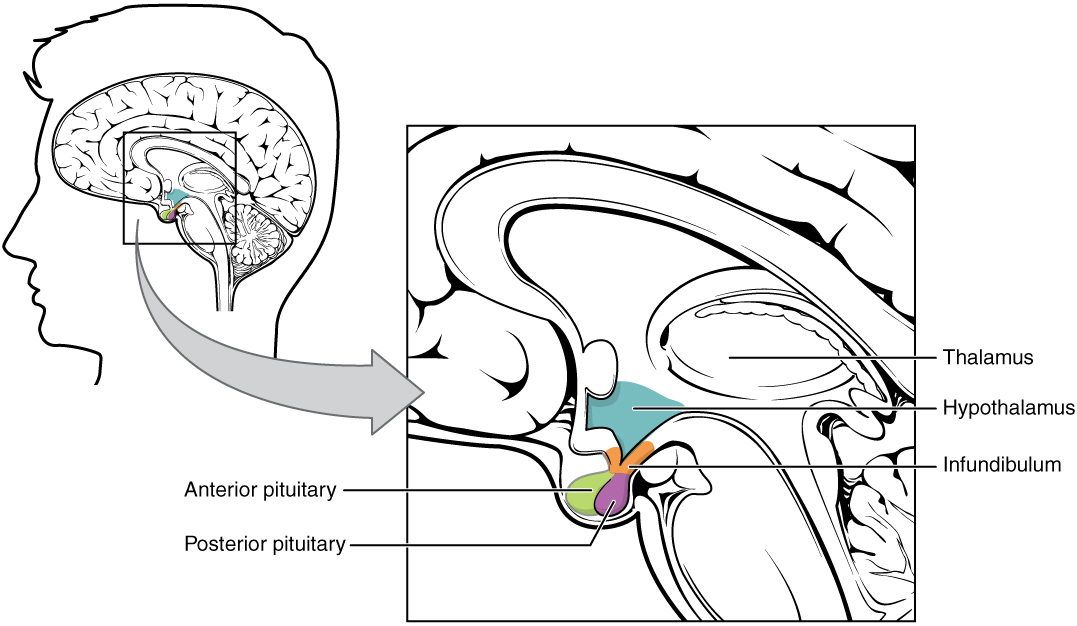Playlist
Show Playlist
Hide Playlist
Pituitary Apoplexy and Sheehan’s Syndrome
-
Slides AnteriorPituirary EndocrinePathology.pdf
-
Download Lecture Overview
00:02 Differences between apoplexy and Sheehan. 00:04 What’s apoplexy? I told you that the-the pathogenesis that it shares with would be more or less with massive haemorrhage into the adrenals. 00:13 That’s Waterhouse–Friderichsen, completely different. 00:16 But, this is acute haemorrhage into the pituitary tumour resulting in what? Good. 00:21 Pituitary insufficiency. 00:22 There will be sudden headache because now, literally, sella’s filling up with blood so very quickly. 00:27 It’s going to be a sudden headache and the fact that the optic chiasm is been affected or compromised resulting in bitemporal hemianopsia. 00:36 It might also have issues with cranial nerves III oculomotor, trochlear 4 and then maybe something like your 6 abducens, meaning to say you’re going to have visual issues. 00:48 With this sudden rush of blood into your sella, this is not about you going in there and removing a tumour. 00:57 This is about you relieving that pressure ASAP. 01:01 Once again, when this is taking place, what’s the most important hormone that you’re always paying attention to? It’s the cortisol, cortisol, cortisol. 01:08 In addition, understand that the pituitary… Do not, I mean, when there’s talk about insufficiency, do not just restrict yourself to the anterior pituitary. 01:17 Your patient might not have ADH, may result in symptoms of what? Central diabetes insipidus. 01:22 Are we clear? Are we clear? Most dangerous of them all would be your secondary adrenal insufficiency due to lack of ACTH. 01:30 So, what’s your treatment? Please make sure that you treat your patient, manage, manage, manage. 01:36 Glucocorticoid, glucocorticoid, glucocorticoid. 01:38 I cannot stress that enough. 01:40 There will be certain interesting topics that we’ll walk through there. 01:45 When we start talking about the most common cause of Cushing in the United States is iatrogenic, isn’t it? Exogenous, factitious, all the same thing. 01:59 And we’ll talk about a very important scenario in which you really want to make sure that you’re very clear about how the adrenals would die and how a patient with Cushing is going to present. 02:17 And I would try to reinforce that over and over again and I will make sure that I do that for you. 02:24 Listen. 02:25 If you take prednisone, cortisol, you can call it cortisol, then you’re going to look like Cushing. 02:33 When you take cortisol, who’s being supressed? The body is fooled. 02:42 The ACTH will be supressed and the adrenals undergo atrophy. 02:47 Isn’t that interesting? So, the patient looks like Cushing in the US, right? Exogenous. 02:57 Internally, what’s going on with your patient? Secondary hypocortisolism. 03:03 Isn’t that fascinating? Make sure that you’re clear with that. 03:07 If you’re not, that’s okay, I’ll keep repeating, like I have been doing it with everything else. 03:11 By the time it becomes… by the time we’re done, it will be part of your subconscious reflex. 03:16 You want to make sure with this apoplexy that you immediately relieve the pressure. 03:22 Decompression surgically. 03:24 It’s an urgency. 03:27 Versus Sheehan. 03:28 In Sheehan, we talked about the pregnant woman who is-who is having massive haemorrhage and during that haemorrhage, there’s going to be pretty massive pituitary infarction. 03:39 This is called Sheehan. 03:40 She’s going to then present with lack of the ability to lactate and breastfeed her child. 03:47 And as far as management is concerned, you want to make sure that she’s able to properly survive with her stress hormone called? Cortisol, good. 03:58 Pituitary insufficiency. 04:01 Apoplexy versus Sheehan. 04:03 This is Sheehan.
About the Lecture
The lecture Pituitary Apoplexy and Sheehan’s Syndrome by Carlo Raj, MD is from the course Pituitary Gland Disorders.
Included Quiz Questions
Pituitary apoplexy does not present with which symptom?
- Hyperglycemia
- Sudden headache
- Ophthalmoplegia
- Altered mental status
- Hypotension
What may result from pituitary apoplexy?
- Secondary adrenal failure
- Primary hypothyroidism
- Addison's disease
- Cushing's disease
- Diabetes mellitus
What is a common presentation of Sheehan's syndrome?
- New mother unable to produce milk
- Hypotensive shock
- Hypertensive crisis
- Altered mental status
- Ophthalmoplegia
Customer reviews
5,0 of 5 stars
| 5 Stars |
|
5 |
| 4 Stars |
|
0 |
| 3 Stars |
|
0 |
| 2 Stars |
|
0 |
| 1 Star |
|
0 |




